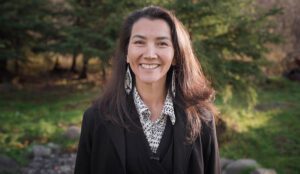
Rep. Mary Peltola, D-Alaska, is speaking out in support of an International Watershed Board for specific rivers along the Southeast Alaska and British Columbia border to ensure environmental protection from potential mining site dam tailings for these salmon rich waterways.
Peltola announced her support for an International Watershed Board on Monday, in advance of meetings this week by the International Joint Commission of the U.S. and Canada in Washington D.C. The commission’s mandate is to prevent and resolve disputes under the U.S.-Canada Boundary Waters Treaty of 1909.
“Alaska and Canada share more than just a border; we share many watersheds and rivers that are critical to our people,” Peltola said.
The congresswoman added that she’d heard from many Alaska communities and tribes about their concerns about the potential impacts of widespread Canadian mineral exploration and development, including construction of large tailing dams near shared wild salmon habitat.
“These (mining) projects are proceeding quickly, and we must ensure that our shared water resources are protected,” she said.
Systems she wants protected by an International Watershed Board include the Taku, Stikine-Iskut and Unuk-Nass rivers along Southeast Alaska’s boarder with British Columbia.
“I am hopeful that the Canadian governments will honor the internationally accepted process as laid out in the Boundary Waters Treaty and allow this critical conversation to take place between all impacted jurisdictions,” she said.
Peltola’s support for creating the International Watershed Board won quick kudos from the environmental entity Salmon Beyond Borders, which said Peltola had made clear the importance of defending clean water and wild salmon rivers faced with the potential adverse impact of mining upstream.
Salmon Beyond Borders’ director Brenna Walker noted that a watershed board is an international process established through the International Watersheds Initiative of the International Joint Commission and Boundary Waters Treaty that brings together people from all impacted jurisdictions.
The Taku, Stikine and Unuk watersheds total some 35,000 square miles of some of the last remaining wild salmon habitat on the plant.
